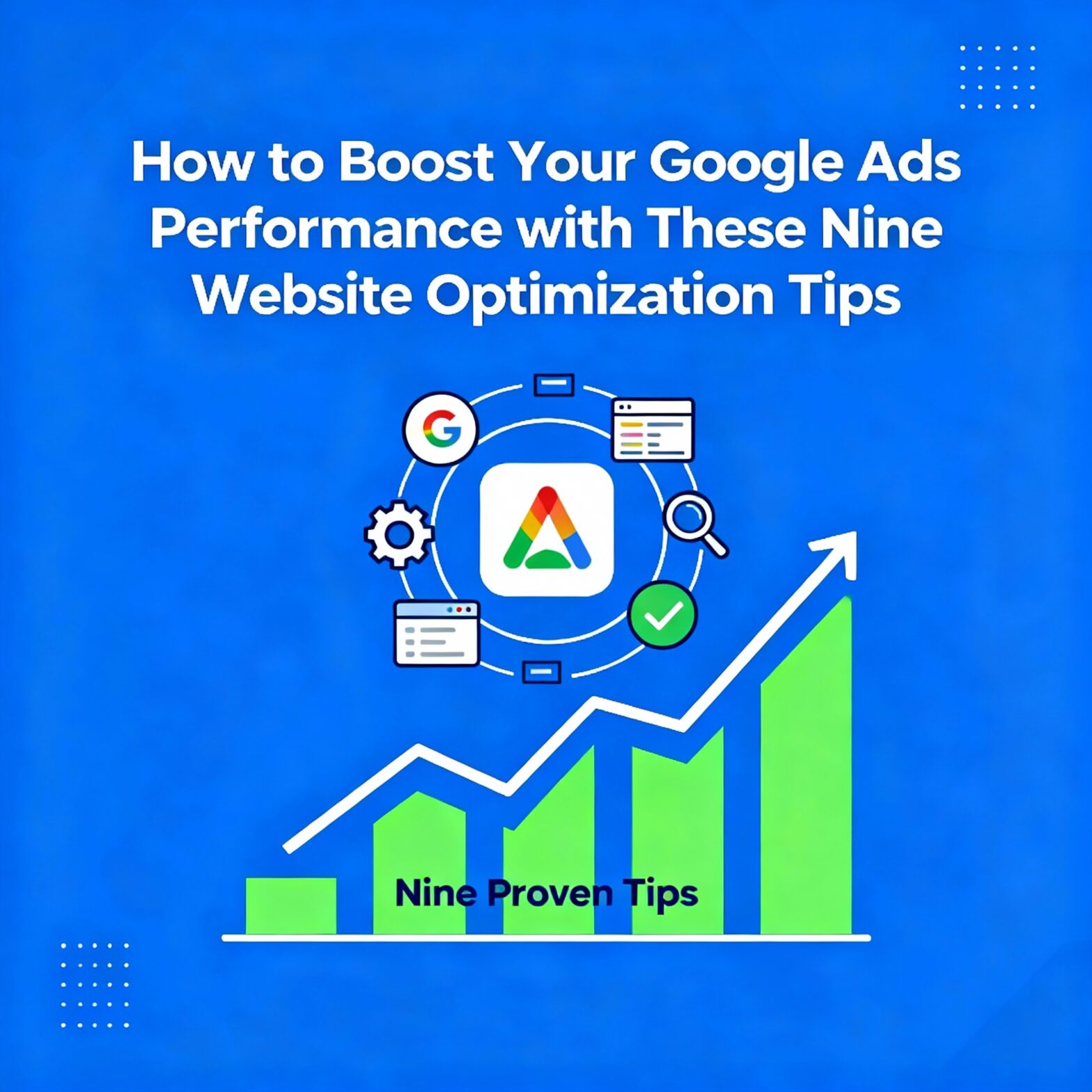Google Ads is a powerful online advertising platform that lets you reach millions of potential customers on Google. To achieve optimal results in your Google Ads campaigns, you require a finely tuned website that turns visitors into leads and sales.
In this post, we will share with you nine tips to optimize your website for Google Ads and help you achieve your business goals. These tips are based on Google’s best practices and our own expertise in website design and development.
1. Understand Your Customers with Buyer Personas
Creating buyer personas based on real data helps you understand your customers better. Utilize tools like Google Analytics, Surveys, and Trends, and conduct interviews to gather valuable insights. Tailor your website design and content to match customer expectations, allowing for more effective Google Ads targeting.
2. Simplify Website Design for Better User Experience
Simplify your website design by emphasizing key elements and removing unnecessary clutter. This streamlined approach boosts website speed, usability, credibility, and decreases bounce rates, enhancing Google Ads performance.
3. Speed Up Your Website for Higher Conversions
Website speed significantly impacts user experience and conversion rates. According to Google, mobile users tend to leave a site if it takes more than 3 seconds to load. Improve your website’s speed by optimizing performance, using a content delivery network (CDN), and employing techniques like caching and compression.
4. Regularly Update Content to Stay Relevant
Your website content should evolve to reflect industry trends and meet user expectations. Keeping your content fresh can boost your Google Ads performance, SEO visibility, user satisfaction, and website authority. Create a content plan and schedule to update your content regularly, making your site more appealing and useful.
5. Display Contact Details Clearly
Make it easy for visitors to contact you by prominently displaying your contact information. Include contact details in the header, footer, and a dedicated contact page. This not only improves user experience but also builds trust and credibility.
6. Ensure Mobile-Friendly and Responsive Design
Given the rise in mobile users, a responsive and mobile-friendly design is crucial. Google prioritizes mobile-friendly websites, and a seamless experience across devices positively influences Google Ads performance. Optimize images, ensure buttons are easily tappable, and test your website on various devices.
7. Optimize Landing Pages for Google Ads Campaigns
Align your landing pages with Google Ads campaigns for a cohesive user journey. Consistency between ad copy and landing page content is essential. Highlight key selling points, maintain clarity, and keep forms concise. Regularly test different landing pages to identify the most effective ones for maximum conversion impact.
8. Implement SEO Best Practices
Enhance your website’s visibility on search engines through effective Search Engine Optimization (SEO). Conduct keyword research, optimize meta tags, create high-quality content, build a strong internal linking structure, and regularly update content. These practices improve overall website performance and attract organic traffic.
Search Intent and Its Impact on SEO Strategies
Understanding search intent is at the core of any successful SEO approach. Search intent refers to the underlying purpose or goal behind a user’s online query. Essentially, it’s about figuring out what visitors are truly looking for when they type specific phrases or questions into search engines like Google or Bing.
There are four primary types of search intent to consider:
- Navigational: The user wants to visit a particular website or webpage (e.g., searching for “LinkedIn login”).
- Informational: The user is looking for general information or answers (e.g., “how do solar panels work?”).
- Commercial: The user is researching products or services with the intention to compare or evaluate before purchasing (e.g., “best wireless headphones 2024”).
- Transactional: The user is prepared to complete an action, such as making a purchase or signing up (e.g., “buy running shoes online”).
Incorporating search intent into your SEO strategy involves tailoring your website’s content to directly address what your audience is searching for. For example, product comparison pages satisfy commercial intent, thorough guides address informational queries, and clear call-to-action buttons cater to transactional needs.
By aligning your content with the proper intent, you boost your chances of ranking higher on search engine results pages, driving more qualified traffic to your website, and increasing the likelihood that users will take your desired action. High-performing SEO doesn’t just stuff keywords into pages; it thoughtfully answers the real questions behind those searches, providing relevant, valuable information every step of the way.
9. Track and Improve Website Performance with Analytics
Utilize analytics tools such as Google Analytics to track user behavior, conversion rates, and other key metrics. By using A/B testing, you can evaluate different website variations, while keeping an eye on website speed guarantees peak performance. Continuously check analytics, gather user feedback, and apply data-driven changes to improve your website constantly.
To conclude, your website optimization is key for enhancing your Google Ads results. By knowing your audience, streamlining design, boosting speed, refreshing content, showing contact details, adopting mobile-friendliness, improving landing pages, applying SEO, and using analytics, you create a solid base for effective online advertising. Be flexible, adjust to user needs, and keep improving your website to remain ahead in the changing digital environment.

